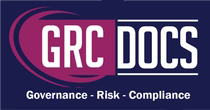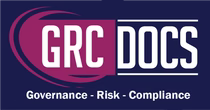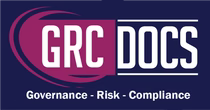SOC 2 Control Policy Examples Essential Templates For Compliance
Introduction
In today's digital age, ensuring the security and privacy of sensitive data is paramount for businesses. SOC 2 compliance plays a critical role in helping companies manage customer data based on five "trust service principles": security, availability, processing integrity, confidentiality, and privacy. If you're aiming for SOC 2 compliance, understanding and implementing effective control policies is essential. These policies not only safeguard data but also enhance the organization’s reputation and reliability in the eyes of clients and stakeholders.

The Importance Of SOC 2 Compliance
SOC 2 compliance is not just about ticking boxes. It's a thorough process that focuses on how organizations manage and protect their customer data. This compliance is essential for building trust with clients, as it assures them of the organization's commitment to data security and privacy. Beyond trust, SOC 2 compliance can be a competitive differentiator, setting organizations apart in a crowded marketplace.
In an era where data breaches can lead to significant financial and reputational damage, SOC 2 compliance acts as a safeguard. It not only protects data but also provides a framework for incident response and recovery, minimizing potential impacts. Organizations that prioritize SOC 2 compliance often find that it streamlines operations and improves overall efficiency, as it encourages a culture of security and accountability.
Key Components Of SOC 2 Control Policies
When it comes to SOC 2 control policies, there are several key components to consider. Each control policy addresses specific areas that are vital for maintaining SOC 2 compliance. Here are some examples:
1. Security Policies
Security is the backbone of SOC 2 compliance. It encompasses measures that protect against unauthorized access, ensuring that data is safe and secure. Key security policies may include:
-
Access Control Policies: Define who can access data and systems. These policies ensure that only authorized personnel have access to sensitive data. This involves implementing multi-factor authentication and regular access reviews to prevent unauthorized access.
-
Encryption Policies: Outline the encryption standards for data at rest and in transit. This protects data from being intercepted or accessed by unauthorized users. Encryption not only protects data but also helps organizations meet legal and regulatory requirements for data protection.
-
Incident Response Policies: Detail the steps to be taken in the event of a security breach, including communication plans and recovery strategies. These policies ensure a swift and effective response to minimize damage and restore normal operations promptly.
2. Availability Policies
Availability refers to the system's ability to remain operational and accessible. Policies in this area ensure that systems are reliable and can withstand disruptions. Examples include:
-
Disaster Recovery Policies: Define procedures for restoring services after a disruption or disaster. These policies ensure minimal downtime and data loss. Regular drills and simulations can be conducted to test the effectiveness of these recovery plans.
-
Backup Policies: Establish guidelines for regular data backups and testing of backup systems. Regular testing ensures that data can be recovered in the event of a system failure. Implementing redundant systems and off-site backups further enhances data availability and resilience.
3. Processing Integrity Policies
Processing integrity ensures that systems perform their intended function without error. Policies in this area might include:
-
Data Validation Policies: Ensure data is accurate, complete, and processed correctly. These policies help maintain data integrity throughout processing. Automated checks and validations can be employed to detect and correct errors in real-time.
-
Quality Assurance Policies: Outline procedures for testing and validating system outputs to ensure they meet quality standards. Regular audits and assessments can be conducted to identify areas for improvement and ensure compliance with established standards.
4. Confidentiality Policies
Confidentiality involves protecting sensitive information from unauthorized disclosure. Key confidentiality policies include:
-
Data Classification Policies: Define how data is classified based on sensitivity levels. This ensures that the most sensitive data is subject to the highest level of protection. Classification helps in determining the level of access control and encryption required for different data types.
-
Third-Party Vendor Policies: Ensure that vendors adhere to your confidentiality standards when handling sensitive data. This includes agreements and regular audits. Establishing a rigorous vendor management process ensures that third parties do not become a weak link in the security chain.
5. Privacy Policies
Privacy policies focus on the collection, use, and retention of personal information. Examples of privacy policies are:
-
Data Retention Policies: Specify how long data is retained and when it should be deleted. This helps ensure compliance with legal and regulatory requirements. Implementing automated data purging processes can help maintain compliance with retention policies.
-
User Consent Policies: Detail how user consent is obtained and documented for data collection and processing activities. Transparent communication and clear privacy notices build user trust and compliance with privacy regulations.
Implementing SOC 2 Control Policies
Developing and implementing SOC 2 control policies requires careful planning and execution. Here are some practical steps to guide you through the process:
-
Conduct a Risk Assessment: Begin by conducting a thorough risk assessment to identify potential vulnerabilities and risks within your systems. This will help you prioritize which policies to implement first based on the level of risk they address. A detailed risk assessment provides a roadmap for allocating resources effectively to the most critical areas.
-
Develop Comprehensive Policies: Using the key components outlined above, develop comprehensive policies that address each of the SOC 2 trust service principles. Ensure that these policies are clear, actionable, and tailored to your organization's specific needs. Collaboration across departments can ensure that policies are practical and aligned with operational realities.
-
Train Your Team: Training is critical to the successful implementation of SOC 2 control policies. Ensure that all team members are aware of the policies, understand their importance, and know how to apply them in their daily activities. Continuous training programs and workshops can keep the team updated on the latest security practices and threats.
-
Monitor and Review: Regularly monitor and review your SOC 2 control policies to ensure they remain effective and relevant. This includes conducting internal audits and assessments to identify areas for improvement. Leveraging technology for real-time monitoring can provide insights into policy effectiveness and areas requiring attention.
- Engage an External Auditor: To achieve SOC 2 compliance, engage an external auditor to assess your policies and procedures. The auditor will verify that your organization meets the SOC 2 requirements and provide you with a report that you can share with clients. This external validation not only boosts client confidence but also highlights areas where further enhancements can be made.
Conclusion
SOC 2 compliance is a vital aspect of protecting customer data and building trust with clients. By implementing robust control policies that address security, availability, processing integrity, confidentiality, and privacy, your organization can achieve and maintain SOC 2 compliance. Remember, achieving compliance is an ongoing process that requires continuous monitoring, review, and improvement.






